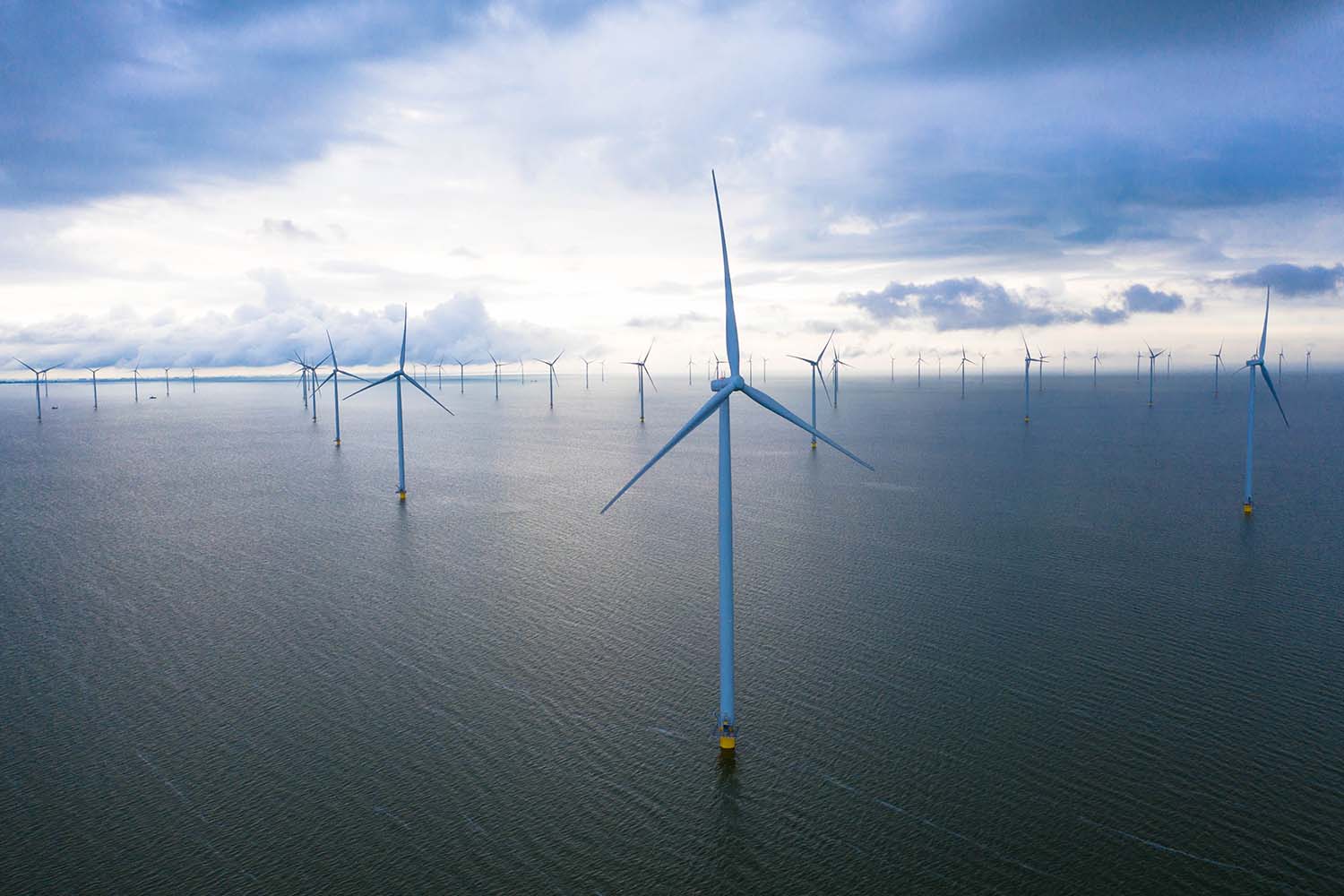Many of us in the UK like to bemoan the often dreary weather. Yet, there are some advantages to being the windiest country in Europe.
With the deepening of the climate crisis and the recent announcement that energy price caps will increase dramatically in April 2022, the demand for alternative renewable energy is rising. Fortunately, the UK is ideally placed to benefit from wind power: an entirely sustainable and limitless energy source. Since 2008, the UK has been the global leader in offshore wind, which provides a sustainable, reliable and cost-effective energy source that can power millions of houses and businesses.
Not only does wind power have a positive impact on the health of our planet’s ecosystems, but it is also great news for Brits. We have seen first-hand what happens when gas prices and supply from overseas fluctuate, leading to the surge in energy prices we now face. But if the UK can provide the necessary levels of energy supply without depending on energy imports from abroad, it can gain better control over energy prices.
As a result, the generation and usage of wind power in the UK and Europe has rapidly accelerated in recent years. Half of the UK’s renewable energy comes from wind farming, and by 2030, it will get a third of its electricity from offshore wind.
So, how do energy suppliers harness the power of nature to fuel our homes and cities, and how will wind power help the UK reach its renewable energy targets?
How is wind power generated?
Wind is a type of solar energy. It is the product of uneven heating of the atmosphere due to the earth’s irregular surfaces and rotation, which create movement and pressure. Wind turbines, often grouped in inland or offshore ‘wind farms’, can convert kinetic energy from the wind into power. A generator then converts this mechanical power into clean, low carbon electricity.
There are some logistical challenges in creating the wind farm infrastructure to support the growing demand for renewable energy, but the benefits of wind power far outweigh them. For example, land-based wind sites are usually located in remote locations to prevent undue disruption to local people, so wind farm developers must build transmission lines to bring electricity from wind farms to cities.
Wind farms also alter the natural habitat for some species, and turbine blades have killed birds and bats. However, the Royal Society for the Protection of Birds supports a significant growth in offshore and onshore wind power generation in the UK, acknowledging that the installation of wind farms is essential to stabilise greenhouse gases and protect the environment. Plus, new technology and improved siting for wind plants has significantly reduced this issue.
The UK’s Maritime and Coastguard Agency (MCA) identified a new challenge for the rapidly expanding offshore wind industry: ships used to transport workers to offshore wind farms were legally allowed to carry only 12 people, no matter the size of the vessel. As a result, the MCA recently announced that as of 9 February 2022, high-speed offshore service craft will be able to transport up to 60 workers, meaning that transport vessels will carry more workers while still meeting safety standards.
What are the advantages of offshore wind farms?
The growing development of wind power should ensure we reach the government’s target for 40 gigawatts of offshore wind capacity by 2030.
Offshore wind farms are incredibly lucrative, thanks to the increased wind intensity at sea. These sites are often more popular than inland wind farms; initial installation costs can be higher, but offshore wind farms can generate more power and negate the impact of noise pollution and disruption for surrounding communities and environments. And as the cost of generating wind power is low, consumers will soon have better access to affordable green energy.
Renewables generated a record 42% of the UK’s electricity in 2020, overtaking the 41% supplied by fossil fuels. The UK has more than enough access to wind power to meet its electricity needs many times over, and there is plenty of space to expand the UK’s offshore wind farm capacity dramatically. Plus, as governments worldwide set more ambitious renewable energy targets and ramp up the expansion of the renewable energy industry, wind farming could generate an estimated 3.3 million jobs by 2025.
As such, the future looks bright for offshore wind farming, with several investments projects underway or anticipated for the near future. In January 2022, the UK government announced a £60 million boost for floating offshore wind. Hornsea Two — which will become fully operational this year — will overtake its sister site, Hornsea One, as the world’s largest offshore wind farm. It is located approximately 89 kilometres off the coast of Yorkshire and will provide enough clean electricity to power well over 1.3 million homes.
Hydrosphere is dedicated to supporting the UK’s offshore wind capacity development. Contact us at +44 (0)1420 520374 or email sales@hydrosphere.co.uk for more information about our renewable energy products and services.








